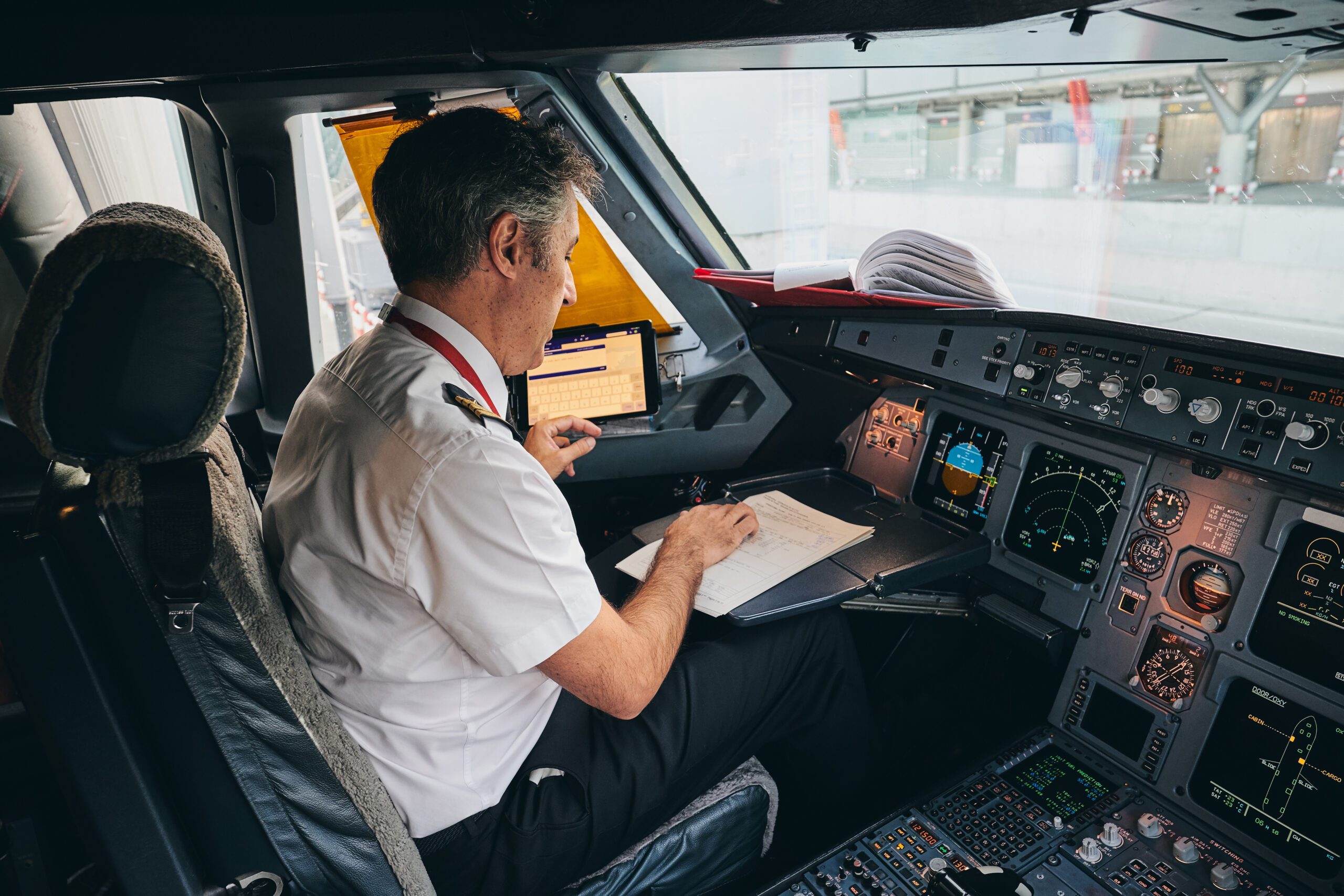Weather intelligence for the future: Crafting a strategic enterprise approach to changing environmental conditions
Continue readingKey takeaways:
- Weather-aware flight planning supports safer, more efficient operations – whether airlines choose flexible weather APIs or a full end-to-end solution.
- Integrate real-time weather intelligence into dispatch and flight planning workflows to streamline operations and reduce delays.
- Leverage weather APIs for turbulence alerts, en-route conditions, and surface forecasts customized to existing tools and systems.
- Reduce fuel costs and inefficiencies by avoiding holding patterns, unnecessary altitude changes, and excessive taxi time.
- Choose end-to-end platforms for faster deployment, centralized visibility, and integrated support for pilots, dispatchers, and planners.
In the aviation industry, success rests on a threefold commitment: providing uncompromising safety, maximizing aviation efficiency, and delivering a reliable passenger experience. Yet one variable – weather – remains the most powerful and persistent force challenging all three. Weather’s impact is felt far beyond a single flight plan. For example, clear-air turbulence can jeopardize passenger and crew safety, while convective storms snarl hub traffic and trigger cascading delays. This directly affects an airline’s bottom line, brand reputation, and its fundamental commitment to keeping everyone on board safe.
To navigate this challenge, leading airlines are no longer simply reacting to the forecast. They are building resilience by embedding advanced weather intelligence into the core of their operations. Proactive, weather-aware flight planning is the key to true flight optimization. It empowers airlines to strategically route around hazards, reduce costly delays, conserve fuel, and ultimately, enhance safety. This ability to transform data into decisive action is what separates the prepared from the disrupted, whether through granular APIs or end-to-end platforms. With the right data intelligence from the world’s most accurate forecaster¹ airlines can master the variable of weather and deliver on their promise of safe, dependable travel.
The role of accurate forecasts in modern aviation efficiency
Weather influences every takeoff, landing, and flight path, making it a critical factor in flight scheduling and operations.
of flight delays exceeding 15 minutes are caused by weather-related issues2
Severe weather delays can cause a cascading effect that impacts flights across an airline’s entire network. A storm at a major hub, for example, can lead to widespread rerouting, congestion, and missed connections. These disruptions frustrate both passengers and airline crews.
Adverse conditions don’t just affect scheduling. They also lead to increased fuel burn, additional holding patterns, and greater operational strain. Jet fuel is expected to account for 26.4% of global airline operating costs in 2025.³ Inefficient operations caused by weather, such as extended taxiing and holding, add significantly to these costs.
Carrying unused fuel also adds significant weight and cost to flights. One study shows that 4.48% of total fuel consumption comes from carrying extra fuel that is never used. This cost a major U.S. airline an estimated $230 million annually.⁴ By using predictive weather analytics – a core component of modern aviation weather solutions – airlines can plan more precise fuel loads. This reduces excess weight without compromising safety.
By integrating advanced weather data and intelligence tools from The Weather Company, airlines can be better prepared to:
- Reduce unplanned altitude changes and route deviations to improve fuel efficiency.
- Avoid holding patterns by slowing down impacted flights enroute or by delaying pushback.
- Optimize ground operations, minimizing fuel waste from excessive taxi times and tarmac congestion.
Enhancing passenger experience through weather-aware planning
Beyond aviation efficiency gains, weather-aware planning directly contributes to passenger satisfaction and safety. Turbulence is one of the leading causes of in-flight injuries. In fact, 79% of serious turbulence-related incidents affect cabin crew.⁵ Advanced turbulence prediction tools, powered by superior weather data, help pilots avoid rough air. This leads to a smoother and safer travel experience.
Wind shear and fog are also major concerns during takeoff and landing. Wind shear, a sudden change in wind speed or direction, poses significant risks during these critical flight phases. Similarly, dense fog reduces visibility and frequently causes delays. By integrating high-resolution weather data, airlines can make smarter go/no-go decisions and reduce last-minute diversions.
Thunderstorms, tropical cyclones, and winter storms all pose significant threats to aviation. While thunderstorms cause intense, often localized, disruptions, winter storms and hurricanes bring more extended and geographically widespread challenges, grounding aircraft and creating system-wide paralysis. Their multi-day impact often requires airlines to predict precisely when conditions will clear to resume operations efficiently. By leveraging advanced weather intelligence, carriers can proactively plan for, and recover from, these high-impact events, ensuring safety and significantly reducing prolonged operational costs.
Choosing the right aviation weather solution: APIs vs. a full platform
As airlines look to integrate sophisticated weather insights, they face a key choice. Should they use flexible weather APIs to build custom applications? Or would an all-encompassing, end-to-end platform be a better fit? There isn’t a single answer, as both options offer significant benefits. The right decision for your airline typically depends on your current systems, goals, and internal resources.
Whether you need a lightweight integration or a fully managed platform, The Weather Company supports both paths with our industry-leading aviation weather solutions. Here’s how to evaluate which strategy best fits your needs.
Weather APIs: Flexibility and customization
For airlines with robust in-house development teams, integrating weather APIs can be the ideal path. APIs act as building blocks, providing direct access to The Weather Company’s plug-and-play, global weather data catalog. This includes everything from precise en-route forecasts and turbulence modeling to hyper-local surface insights.
- Tailored integration: Weave weather data seamlessly into your existing proprietary systems, dashboards, or pilot applications.
- Cost-effective for specific needs: Get a focused solution if you only need specific data points, like forecasted icing or convective risk for a hub.
- Agility and innovation: Empower your teams to rapidly prototype, test, and deploy new weather-aware features and applications.
- Modular approach: Start small with one or two critical data feeds, then scale up as your needs evolve without overhauling an entire system.
This granular approach puts the power of customization directly in your hands. It is best suited for airlines that want to integrate precise weather intelligence into their existing workflows to create a distinct competitive advantage.
End-to-end solutions: Comprehensive power and rapid deployment
On the other hand, end-to-end platforms provide a complete, integrated suite of tools for a broad spectrum of operational needs. These pre-built aviation weather solutions streamline deployment and management, making them attractive for airlines looking for a ready-to-use system with minimal internal development effort.
- Out-of-the-box functionality: Utilize solutions such as Maverick DispatchTM and Pilotbrief Ⓡ to take advantage of comprehensive features including real-time weather tracking, advanced forecasting, turbulence monitoring, and flight planning tools, all in a unified interface.
- Faster time to value: Implement a complete platform more quickly than building from scratch, leading to faster improvements in on-time performance.
- Reduced development burden: Offload the development, maintenance, and hosting responsibilities, freeing up your IT resources.
- Integrated workflows: Enhance coordination and ease of use for dispatchers, pilots, and operations teams with pre-configured workflows and consistent user experience across modules.
- Holistic operational view: Gain a centralized hub for all critical weather intelligence to support more informed, strategic decision-making across the flight network.
This all-in-one approach is designed for rapid implementation, delivering immediate operational improvements and a unified view across your entire network. It provides a direct path to enhanced safety and efficiency, without straining internal IT and development resources.
The destination is the same: a more resilient operation
Ultimately, the choice between weather APIs and an end-to-end solution is a strategic one, dependent on an airline’s unique operational landscape and technical resources. One path offers granular control and customization, while the other provides rapid deployment and comprehensive, out-of-the-box power. However, the path chosen doesn’t change the destination: a more resilient, efficient, and reliable airline operation.
The critical component in either strategy is the quality and accuracy of the weather data and intelligence itself. Aviation solutions and data from The Weather Company can help equip your pilots, dispatchers, and planners with the decisive insights needed to navigate the skies.
Let's talk
To learn more about our advanced aviation weather solutions, contact our aviation experts today.
Contact us1 ForecastWatch, Global and Regional Weather Forecast Accuracy Overview, 2021-2024, commissioned by The Weather Company
2 Federal Aviation Administration (FAA), FAQ: Weather Delay, 2024
3 IATA, Strengthened Profitability Expected in 2025 Even as Supply Chain Issues Persist, 2024
4 Transportation Part C, Flight time prediction for fuel loading decisions with a deep learning approach, 2021
5 NTSB Safety Compass Blog, Flight Attendants Continue to Be Seriously Injured in Turbulence, 2023







